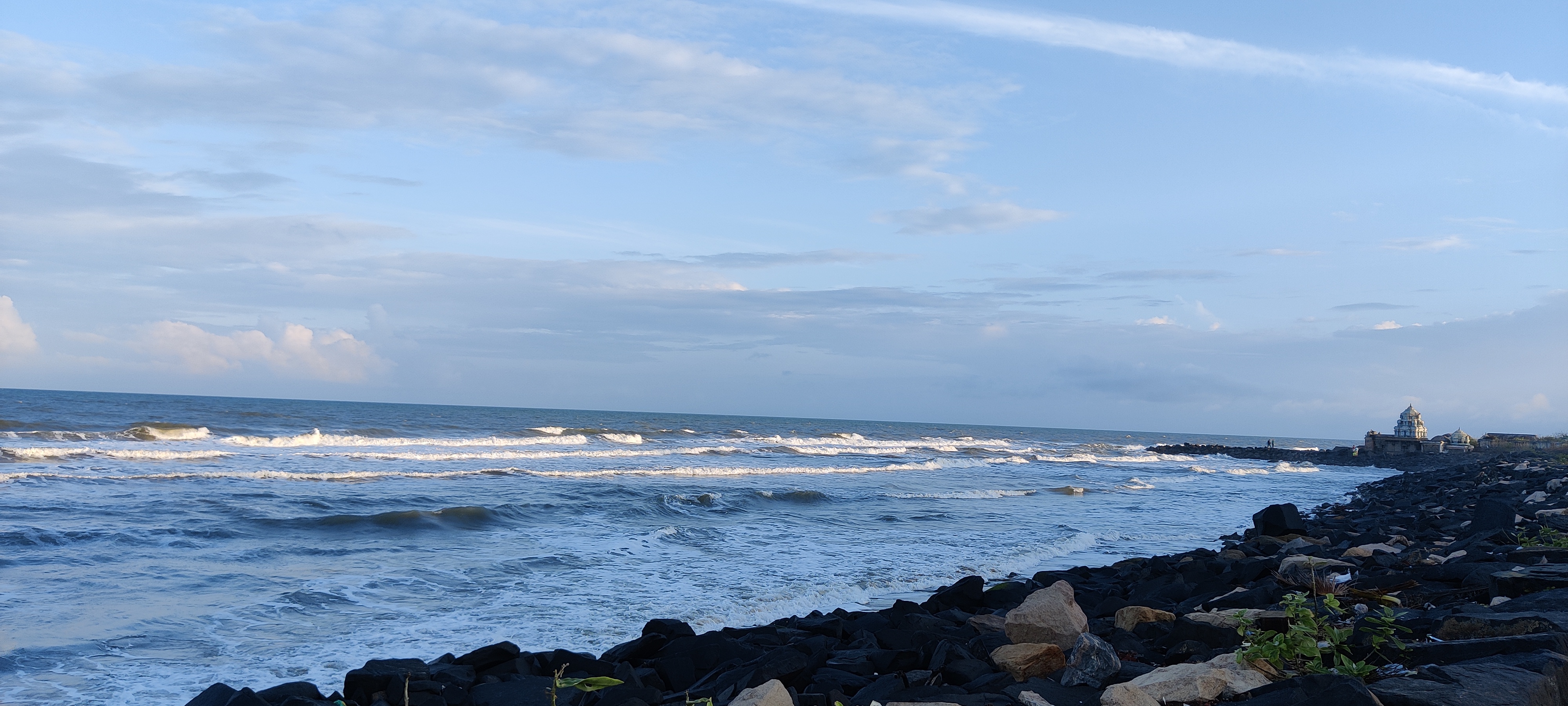Covering 150 km in just about 2 hours was not something we planned for. We didn’t expect our impromptu driving trip to Daman to be such a cool drive. The Mumbai –Ahmedabad highway has been made six-lane with flyovers at every possible junction. It’s almost 4 years since our last road trip through this road and at that time, pot holes in every possible shape decorated the road.
This was meant to be a laid back trip. Drive to Daman, find a decent beach-facing place to stay. Have a relaxed evening. Read something. Also attempt to write. In between, do some star-gazing while listening to the waves lapping at the shore. After doing a few hotel-hoping, looking for a room that does not look like a typical city hotel, we finally settled at Sea Rock Villa, a new place that opened in December 2011. The nice sea-facing sit-out with access to the open- air, beach-side restaurant dotted with coconut trees was sold on us.

The sun too appeared much laidback as it didn’t wear the bright hues of a usual sunset scene—more like an undistinguished exit after a good day’s work. The rocky beach with black gravel was not inviting enough for a walk. In other words, simply relaxing by the beach with hot pakoras was more enticing. With a couple of books, a note pad, pen and camera, we bid our time till late into the night. The cool breeze slowly turned chilly as we sat listening to the waves.
Daman has a long history of invasions and was a Portuguese colony for a long time. It probably had visitors turned invaders from as early as 2nd century AD. The area was ruled by all possible kingdoms—from Mauryas to Satavahanas, Abhiras, Chalukyas, Kolis, and Mughals. Sometime in 1500, Sultan of Gujarat conceded Daman to Portuguese who continued to rule it till 1961 when the Indian forces took control. There is a war memorial inside the Daman fort. Daman was initially part of the Union Territory of Goa, Daman, and Diu. Goa became a state much later while Daman and Diu remain Union Territory.

Invaders continue. But in the form of tourists from Gujarat who are starved of liquor and then people like us who want to get out of the Mumbai city every weekend. The Daman Ganga river bifurcates Moti Daman and Nani Daman. The best places to stay and dine are by the Devka Beach in Nani Daman. The fort in Moti Daman with its small roads, old colonial buildings where all administrative offices function now is nice to visit. The 16th century Bom Jesus church, built by Portuguese, is marked by its intricate wooden carving in the altar. A new lighthouse stands by the dilapidated old one. A spiral staircase, though rickety, takes you to the top of the old lighthouse to feast on a great view of Daman Ganga embracing the sea and colourful fishing boats anchored by the bay.
The Jampore beach in Moti Daman is a typical beach. Heavily crowded but vast, sandy and nice to walk. Hundreds of vehicles parked at the casuarina-lined parking lot. Shacks. Snacks. Drinks. A couple of horses offering fun ride for kids. One could also join a parakiting ride. A jeep to which the parachute is tied drives fast from one end of the beach to the other, lifting people up giving them some adrenalin rush. The lone restaurant near the beach was crowded. So we headed back to Nani Daman for lunch and then back to Mumbai.
Daman is about 180 km from Mumbai. Vapi is the nearest railway station. There are trains and buses to Vapi. There are several good hotels by Devka beach in Nani Daman.























Lovely article and nicely written.
http://www.rajniranjandas.blogspot.com
Daman and Diu are very close to my heart. But as you said the shoreline at Daman is not much attractive. May be because of the quality of sand. O have a cousin there at Sylvassa and has been pressing me to make it.